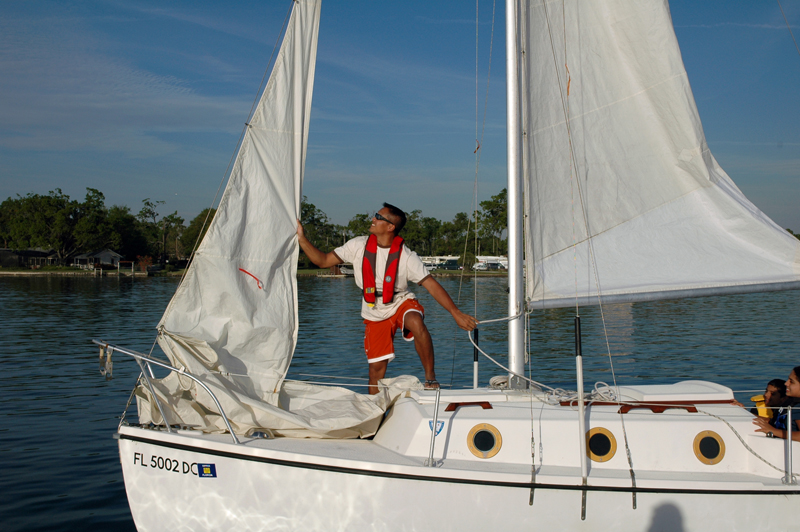As spring warms the shores of the Chesapeake, it’s time to prepare for another boating season on the Chesapeake Bay.
Whether boating, kayaking, or sailing, a few key safety checks will ensure a safe and smooth start. Inspecting your safety gear and vessel now can help prevent breakdowns and emergencies later. Here’s a step-by-step guide to getting your boat water-ready.

1. Inspect Your Personal Flotation Devices (PFDs)
- Your life jacket is your most important safety equipment, but it will not help if it is damaged, expired, or improperly fitted.
- Check for damage: Look for rips, mildew, or worn-out fabric. If the foam inside feels brittle or compressed, replace the PFD.
- Test straps and buckles: Ensure all buckles, zippers, and adjustment straps work correctly.
- Check expiration dates: Most foam-filled life jackets last about 10 years before needing replacement. Inflatable PFDs require more frequent maintenance.
- Inspect inflatable PFD cartridges: CO₂ cylinders should be securely installed, not punctured, and within their three- to five-year expiration period (check the manufacturer’s label).
- Ensure proper fit: A life jacket should fit snugly and not ride up when pulled at the shoulders.
Maryland law requires a U.S. Coast Guard-approved life jacket for each person on board, and boats over 16 feet must also have a throwable flotation device.
2. Perform a Basic Boat Safety Check
After months in storage, your boat needs a complete systems check before heading out. Here’s what to inspect:
Battery and Electrical System
- Check the battery: A healthy 12-volt battery should read at least 12.6 volts when fully charged. Ensure that lights and other components work.
- Test lights and horn: Navigation lights must be operational for nighttime use. Your horn should be loud enough to be heard half a mile away.
- Verify your bilge pump operates: Check the bilge for debris and activate the manual switch to ensure proper pump function.
Propeller and Steering
- Spin the propeller: Look for dents or bent blades, which can affect performance.
- Test steering: Turn the wheel left and right (complete turn) to ensure smooth movement.
3. Prepare for Cold Water Conditions
Spring boating can be deceptively dangerous. The air may be warm, but water temperatures often stay cold into May, increasing the risk of hypothermia.
- Dress for the water, not the air: If kayaking or sailing, wear a wetsuit or drysuit to guard against cold-water immersion.
- Follow the “1-10-1” rule: Expect one minute of cold shock, 10 minutes of meaningful movement before muscle failure, and one hour before hypothermia becomes life-threatening.
- Stay close to shore: This ensures a faster return to safety if you fall in.
Always wear a PFD, especially in cold water—it greatly increases survival time.
4. Check Safety and Navigation Equipment
Safety gear has expiration dates, so inspect your equipment before your first trip:
- Fire extinguisher: Check the gauge; if it’s in the red, replace it. Most extinguishers expire after 12 years (check the manufacture date).
- Flares and signal devices: Flares expire every 42 months (3.5 years); replace outdated ones.
- Anchor and rope: Ensure the rope isn’t frayed and the anchor is secure.
- VHF radio: Test by doing a radio check on channel 16 or 9.
Pack a waterproof emergency bag with a whistle, flashlight and first aid kit.
Free vessel safety checks
For extra peace of mind, the U.S. Coast Guard Auxiliary offers free vessel safety checks to help ensure your boat meets safety standards. The Auxiliary is a volunteer organization dedicated to promoting boating safety through vessel inspections, boating education courses and support for search-and-rescue operations.
A little preparation now can prevent major headaches later. By checking your PFDs, boat systems, safety gear and navigation equipment, you’ll be ready for a safe and enjoyable start to the boating season.
Do you have any questions, recommendations, or are interested in the Annapolis Coast Guard Auxiliary? Write to Stephen Fridakis.
by Stephen Fridakis




